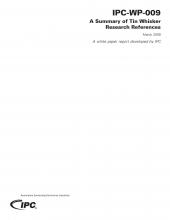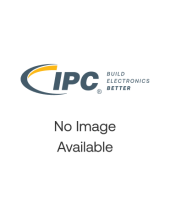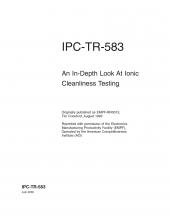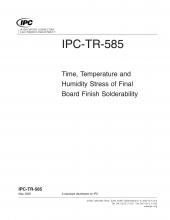Document #
Language
Products
As most of the world converts to lead-free manufacturing, the concern over tin whiskers as a reliability hazard has grown due to the emergence of pure tin as a dominate component surface finish. A significant amount of research on tin whisker formation and tin whisker mitigating strategies has been performed in both commercial and defense industries. This working paper is a summary of the...
This document details the test procedures, test results and team conclusions for the IPC Cleaning and Cleanliness Testing Program, Phase 3, Low Solids Flux in Ambient Air. This effort has been part of a multi-stage program to investigate material and process alternatives to the use of chlorofluorocarbons (CFCs) in electronics manufacturing. This Phase 3 effort has been dedicated to characterizing...
This original research was a cooperative effort between the EMPF and IPC, released as EMPF-RR-0013 in 1993 for better understanding of ionic cleanliness testing. The IPC Ionic Conductivity/Ion Chromatography Test Task Group has validated its continued importance and relevance to the cleaning community and IPC-TR-583 is the result. It includes how solvent temperature influences the final...
This Technical Report details the investigations into identifying stress tests that distinguish between robust and non-robust surface finishes. A robust finish will pass a test for solderability whereas a non-robust finish will fail. The stress tests identified do not necessarily duplicate real world environment (fabrication of the bare printed board through assembly), but they must correlate to...
Coming Soon
IPC-7095E: Design and Assembly Process Implementation for Ball Grid Arrays (BGAs)
IPC-2294: Design Standard for Printed Electronics on Rigid Substrates
IPC-6904: Qualification and Performance Specifications for Printed Electronics on Rigid Substrates
IPC-4105: Specification for Metal Base Copper Clad laminates for Rigid Printed Boards




